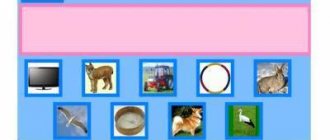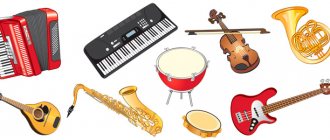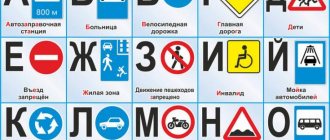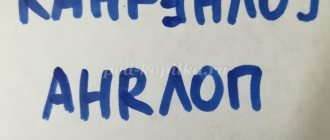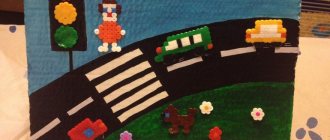A few more games
A. Compared to other games, this is a fairly simple trading simulator. If, for example, in Eve you have a merchant character for well-guarded systems, the emotions are about the same as in the game for him. Plus there is the parody "Star Munchkin", the card tactics "Race for the Galaxy", the big "Battlestar Galactica" and the simple, almost childish game "Perry Rodan".
Important ! All space-themed board games will allow you, during the gameplay, to become a conqueror of outer space, encounter aliens, and also become a participant in intergalactic battles, a rescuer of extraterrestrial civilizations.
At the turn of the century
Today, decades after the release of Star Wars, the tabletop industry is no longer recognizable. Now that it has blossomed and grown stronger, it can compete with video games, films and books combined. Board games have become incomparably more popular, and a fan of them no longer risks getting hit in the face on the street if he inadvertently talks about them without much preamble.
In 2014, Andy Weir's novel The Martian was published, which made an invaluable contribution to the popularization of the science fiction . This is a simple but touching story about a modern Robinson Crusoe - an astronaut forgotten on Mars during an emergency evacuation. From the book you will find out whether a simple astronaut can survive on the Red Planet? And - what is much more interesting - is it possible to grow potatoes in Martian soil?
On a note ! The book immediately became a worldwide bestseller and won the hearts of a wide range of readers. It is not surprising that a year later the film of the same name was released, directed by Ridley Scott and starring Matt Damon. So far, this is the most successful project of the creator of Alien, which has collected a huge amount at the global box office.
Why are we talking about this? Then, in 2016, the board game “Conquest of Mars” appeared, whose phenomenal popularity is explained by the above. And then Musk is preparing to colonize Mars. In short, it was the space theme, and not the standard game mechanics of drafting and resource , that raised this euro almost to the very top of the top.
The best space-themed board games
On April 12, the whole world celebrates Cosmonautics Day. For humans, the vastness of the universe has always been attractive, and to get a little touch of the mysterious, we have prepared several space board games for you! Time to go to the stars!
Cortex
It is known that people who become astronauts are not only strong, brave and resilient, but also smart. For this, future conquerors of the solar system train long and hard. The board game Cortex allows participants to thoroughly test their abilities and even develop them. Take part in the battle of the mind, solving tricky puzzles and tasks at speed, while training various skills. We don’t know whether you will be hired as an astronaut after playing Cortex, but we guarantee that you will think a little faster! Age:
from 8 years old.
Number of players:
from 2 to 6.
Panic in the laboratory
Aliens are among us! Or not exactly aliens, but small and cute amoebas. An accident occurred in a secret laboratory, and funny creatures were released. Players of the board game Panic in the laboratory will have to discover and bring back the naughty amoebas! But be careful - the creatures are very fond of mutation rooms, in which they change their shape, color and pattern. All to confuse you more Age:
from 8 years old.
Number of players:
from 2 to 10.
Chest of Knowledge: Space
The board game Chest of Knowledge: Space - fully lives up to its name, because inside hides a whole mountain of educational and interesting facts about our endless universe. Find out everything about myriads of distant stars, countless galaxies and mysterious planets. Three, two, one - we go to the endless world of knowledge! Age:
from 8 years old.
Number of players:
from 1 to 10.
Aliens in the Corn
Help the adorable aliens find lost items so they can return home. Age:
from 6 years old.
Number of players:
from 2 to 4.
Planet Puzzle
Planet Puzzle. An exciting space-themed puzzle game. Turn your character into a cube and then take it apart. Not an easy task! There are 4 types in the puzzle board game series: Astro, Emperor, Alien and Robot. Age:
from 6 years old.
Number of players:
for 1.
Moonbots
Combine parts in such a way as to assemble the best lunar robot from scrap metal and defeat other robots in a merciless battle of mechanisms. Age:
from 7 years old.
Number of players:
from 2 to 4.
Forbidden Sky
In this co-op game, your team will face multiple endurance challenges in the air, on the water and in the desert. Can you defeat the elements? Age:
from 10 years.
Number of players:
from 2 to 5.
Star Empires
Take part in a star duel for the title of the most influential and powerful empire. Use various ships, build outposts and seek help from allies throughout the galaxy using your authority. There is only room in the universe for one Star Empire! Age:
from 12 years old.
Number of players:
for 2.
We congratulate you on Cosmonautics Day and wish you success in space!
Didactic game for children of senior preschool age “Planets of the Solar System”
Elena Levina
Didactic game for children of senior preschool age “Planets of the Solar System”
Didactic game for children of senior preschool age
"Planets of the solar system - couples"
Tasks:
Didactic.
• Clarify the names of the planets of the solar system.
• Practice memorizing and naming the planets: Mercury, Venus, Earth, Mars, Jupiter, Saturn, Uranus, Neptune, Pluto.
Developmental
.
• Develop attention and memory.
Educational.
• Develop communication skills about the game (listen to each other, take turns, show respect for the players, argue agreement or disagreement with a partner).
• Develop self-control and control over the actions of other participants in the game (see, correct and anticipate mistakes).
Gaming.
• Collect as many pairs as possible and you win.
Rules:
Organizational.
• From 2 to 4 players participate, they sit around a table.
• The teacher participates in the game as a player, presenter and expert.
• The cards are placed face down in the middle of the table, shuffled and laid out in even rows one below the other in the form of a square or rectangle.
• The game ends when players have revealed all the cards.
Disciplinary.
• The order of moves is determined by drawing lots.
• Turn the pictures over where they are and place them with the picture facing up.
• If a player takes the cards, does not show them to others and does not say what is written on them, then he misses the next turn, and the cards are returned to the playing field.
• If a player opens two identical cards, shows them to all players and names them correctly, he takes the pictures and makes an extra move.
Gaming.
• The one with the most pairs of cards wins. He receives a sticker or picture.
Attributes for the game.
• A set of cards - two cards per image: Mercury, Venus, Earth, Mars, Jupiter, Saturn, Uranus, Neptune, Pluto.
Game actions.
The player first opens one card, names what is drawn on it and shows it to the others. Then he opens the second card, also names it and shows it. If the cards do not match, the player places them face down in their original places, and the right to move passes to the next participant. If a player opens two identical cards, he takes them for himself, but he must name which planet he chose, and makes another move. If the player does not name the planet, he loses his turn. When the unpaired pictures are returned to their place, all the players try to remember where each picture is. At the end of the game, each player counts the pictures in pairs, naming the planets and their characteristic features.
Result.
• The child collected the most pairs of pictures and won!
• Children control their actions and other players (see, correct and anticipate mistakes).
Space Truckers
Age: from 13 years Price: from 2990 rubles
This is a game about assembling a spaceship from a bunch of parts of sewer systems, smart houses, as well as a lot of engines, guns and cargo compartments. The faster you navigate and select the elements of the future ship, the better prepared you will be for the journey. Whoever finished assembling the ship the fastest takes off first. If you're lucky, the ship will reach the destination planet. Spoiler: almost everyone reaches the final, as a rule, with partially damaged ships, but with the received cargo and a reward for the speed of delivery.
It's up to you to give or not to give the game. Because besides games, you can choose a cool gift for Cosmonautics Day. For example, these T-shirts from Odevayka will not leave any space lover indifferent.
Fight for the galaxy
Age: from 12 years Price: from 1290 rubles
You have to create the most prosperous state in the Universe. Each round consists of five main phases: search, improvement, development, consumption and production. This is a deep board game that can be played by two. Quite complex rules and many nuances; the game reveals itself only after several games. There are complaints about the quality of the components, but not about the thoughtfulness of the plot. A very interesting game for teenagers and adults.
Board games about space
The best board games about space presented on our website will definitely hook any fan of board games, regardless of age. Game sets have different levels of complexity; simpler ones are presented for beginners, and more complex ones for experienced players.
Also see : TOP 12 best board games for one person. In addition, you will probably be interested in the best board games under 1000 rubles.
1 . Today we will introduce the child to the planets of the solar system. To do this, you will need multi-colored balls of yarn, plastic balls or cards with planets (you can print them from us, see below). On a large sheet of paper, draw the sun in the middle and 8 orbits around it (more recently, Pluto is not the 9th planet of the solar system, so we draw 8 orbits). Explain to your child that the Sun is a very bright and hot star. It attracts 8 planets, which are each located in their own orbit and therefore do not collide. Then put all the “planets” into a bag, box or “magic hat”.
The process of the game is as follows: the child draws the first “ planet ” he comes across, you describe it and give the task to come up with and draw an inhabitant of this planet . Then you need to place the planet with its inhabitants in its orbit.
The description is given in order of distance of the planets from the sun:
• Mercury is the smallest planet and is closest to the sun. Loves to play hide and seek (hides behind the sun's rays, it is very difficult to see). If you stand
and Mercury and look into the sky, the sun will seem huge and it will move in strange zigzags. You can celebrate a birthday there every 88 days. Who lives on Mercury?
• Venus – the entire planet and even the clouds on it are orange. There are always thunderstorms here. There are so many clouds in the sky that you can never see the stars. This planet is very hot, the temperature is 3 times higher than that of boiling oil. Who can settle on this planet? What will they wear, what will they eat, and what kind of housing will they live in? Etc.
• Earth – the child must tell about this planet himself.
• Mars is a red planet. There are very high mountains here, 3 times higher than the highest mountain on Earth. There is no liquid water, only ice.
• Jupiter and Saturn – these planets do not have a solid surface. There is jelly inside the planet (closer to the center of the planet the gas becomes denser and turns into jelly), and outside there are multi-colored clouds. Saturn is 100 times heavier than Earth and really wants to lose weight. To do this, he spins a stone hoop around himself (the rings of Saturn). Oddly enough, Saturn's density is very low and it could easily float on water.
• Uranus is a “lounger” planet. She lies on her side all the time. It also has jelly inside, only the clouds outside are blue, because it is very cold on Uranus. The temperature there is 4 times lower than at the North Pole.
• Neptune is a water planet and has no land. There are storms here all the time.
2 . The Moon is a satellite of the Earth. Why the moon different? To explain this to your baby in a playful way, you will need a table lamp and a couple of balls. Our lamp will be the sun, and the balls will be the moon. By changing the position of the ball in relation to the lamp, you can see how the Moon (light and shadow) changes its appearance.
In Grandfather's right hand is the Young Moon,
on the left is the Full Moon.
The child has the Old Moon in his hand.
We sincerely hope that the educational games on our website will bring a lot of benefits to your child.
WHAT SHOULD I PRESS HERE?
DIY board game for kindergarten on the theme: Space
Master class for children 3-7 years old.
Didactic game "Outer Space". Author: Klimova Irina Anatolyevna, teacher of the preschool educational institution “Solnyshko” kindergarten in the village.
Atamanovka, Chita district, Transbaikal region. Today I was unlucky - I didn't see a UFO. Why did everything happen? Now I will understand everything myself. The astronomers scared them away. With my disbelief in their arrival. They sit, look into the distance, And the days and nights fly by... Now we will make flying saucers that will never fly away from us...
Description of work: the material will be useful to teachers of preschool educational institutions, parents, and children aged 3-7 years. Goal: - development of fine motor skills of fingers in children; — introducing teachers and parents to the use of waste material in the creation of teaching aids for the development of children. Objectives: Educational:
- create a game environment, consolidate knowledge of colors, counting;
- learn to navigate on a plane (right - left, top - bottom). Developmental:
- develop sensory abilities;
- develop fine motor skills and coordination of movements; - develop creative imagination and fantasy. Educational:
- to develop skills of cooperation, mutual assistance, goodwill, independence; - cultivate perseverance and independence in work. Didactic games are one of the important methods of active learning for preschool children. During play, the child develops physically and learns to overcome difficulties. He develops intelligence, resourcefulness, and initiative. Lids are a simple object, but nevertheless they have a mysterious attraction. It's always a shame to throw them away. I would like to present a game that does not require material costs to produce. Parents can also do it for activities with children at home. For the didactic game “Outer Space” we will need: - a rectangular box made of polystyrene foam (without a lid); — dark-colored paper for pasting the box; — DVD discs 3 pcs; — empty bottles of detergents; - electrical tape; - caps of different sizes from different bottles; — plastic suede 2 mm thick; - scissors; - hot glue gun; - small letters and numbers; - carnations with a cap; - sequins; - nail polish.
1. Cover the foam box with dark blue paper.
2. Take a disk and, using scissors, make a hole in the middle equal to the diameter of a plastic bottle cap.
3. Turn the box over and mark a place to make a hole by attaching all the disks.
4. Cut off the neck of plastic bottles almost at the base.
5. Make slits all the way through at the marked points on the box.
6. Insert our cut necks from plastic bottles into these slots.
7. Turn the box over.
8. We “put” disks with holes on the neck.
9. Make a flying saucer template with a hole inside, equal to the diameter of the bottle cap.
10. Trace the template on plastic suede.
11. Cut out, we get 3 blanks.
12. Place “flying saucers” on the discs. Glue it.
13. Screw on the lids.
14. Take a plastic container from any detergent with a dispenser. In our case, the container is oval-shaped with removable rubber “antennae”. Cut off 1/3 of the top part.
15. We do the same as with the base of plastic bottles - through the bottom of the box, thread the upper part of the container into the hole made.
16. Secure it all with electrical tape from the outside.
17. Cut an oval out of suede. Cut a hole inside the oval.
18. “Put” the oval on the neck with the dispenser. Stick it.
19. Return the rubber “antennae” to its place.
20. We do the same with a second similar container.
21. The main work is finished.
22. Now we need to make space for the lids. The same plastic bottle will help us with this. In our case, it is square in shape. The manufacturing principle is similar.
23. The most interesting thing remains - the colorful design of “outer space”. Sequins - stars will help us with this. We stick it on the “flying saucers” and all over the surface of the box.
24. Secure the “antennae” with nails with a cap. The nails fit tightly enough into the foam, so there is no fear that children will easily pull it out.
25. Regular nail polish will also help.
26. Fill the container with lids of various sizes and colors. 27. Let's add inscriptions to the sides of the box. 28. The educational game “Outer Space” is ready! All disks are movable, the lids are removable. Thank you for your attention!
We recommend watching:
Crafts for Cosmonautics Day. Middle and senior group Project on the theme “Space” in the middle group of kindergarten. Video presentation Summary of GCD (application) in the middle group of kindergarten on the topic: Space Entertainment for children of the preparatory group in kindergarten on the topic: Space
Similar articles:
Conversation in the preparatory group “The sun is the source of life on earth”
Conversation in the preparatory group. The Moon is the Earth's satellite
Conversation for children of the senior group “Planets of the solar system”
Stories about Gagarin for children
Summary of the lesson “Starry Sky” in the middle group
